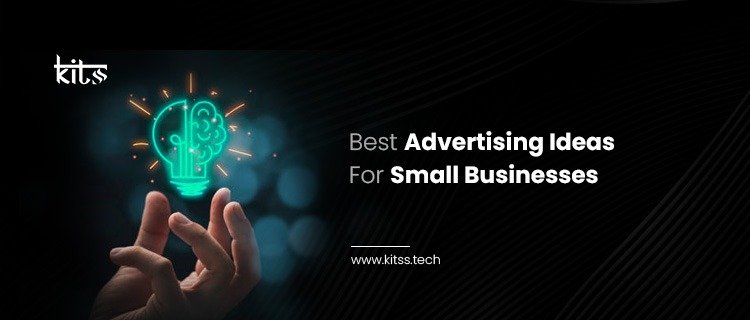Best Advertising Ideas For Small Businesses
Have you ever felt like you’re constantly failing when marketing your business? You pour your heart and soul into your products or services, but it feels like no one knows you exist.
Well, you’re not alone. Hubspot found that 82% of small businesses struggle to generate leads, and 68% have difficulty converting those leads into customers. No wonder many small businesses feel like a small fish in an ocean. The competition is fierce, and it’s hard to get your voice heard. But it doesn’t have to end there.
There are plenty of effective advertising strategies that you can use to reach your target audience and grow your business. In this blog post, we’ll share the best advertising ideas for small businesses.
Strategies To Help You Attract New Customers & Boost Your Sales
- Build a Strong Online Presence
Create a user-friendly website that showcases your products or services, provides valuable information, and includes clear calls to action.
Example: A bakery can create a website with high-quality images of its pastries, a menu with detailed descriptions, and an online ordering system.
- Optimize Your Website for Search Engines
Use relevant keywords throughout your website content to improve your search engine rankings and attract organic traffic.
Example: A florist can incorporate keywords like “wedding flowers,” “birthday bouquets,” and “flower delivery” into its website content and blog posts.
- Engage on Social Media
Create social media profiles on platforms like Facebook, Instagram, and Twitter to connect with potential customers, build brand awareness, and share engaging content.
Example: A coffee shop can use Instagram to share photos of its latte art, host weekly coffee-themed contests, and engage with followers in the comments section.
- Utilize Email Marketing
Build an email list and send regular newsletters with valuable content, special offers, and exclusive promotions.
Example: A clothing boutique sends a weekly newsletter with styling tips, new arrivals, and discount codes for its subscribers.
- Run Targeted Online Ads
Utilize platforms like Google Ads and Facebook Ads to run targeted ads to specific demographics, interests, and online behaviors.
Example: A fitness studio can create targeted ads on Facebook for individuals interested in fitness classes, showing them ads based on their location, age, and fitness goals.
- Partner with Influencers
Collaborate with relevant influencers in your industry to promote your products or services to their engaged audience.
Example: A skincare brand can collaborate with a beauty blogger to create a sponsored review of their new anti-aging serum.
- Implement Customer Referral Programs
Encourage existing customers to refer their friends and family by offering incentives, discounts, or rewards for successful referrals.
Example: A pet grooming salon will offer a discount to the referring customer and the new customer for their first grooming session.
- Participate in Local Events and Community Sponsorships
Get involved in local events, sponsor community initiatives, and support local organizations to increase brand visibility and build goodwill.
Example: A toy store can sponsor a local children’s charity event and provide toys to create positive media attention.
- Leverage User-Generated Content
Encourage customers to share their experiences with your brand by hosting contests, asking for feedback, and featuring their photos or videos on your social media platforms or website.
Example: A restaurant can launch a social media contest asking customers to share photos of their favorite dishes, with the winner receiving a complimentary meal.
- Implement Effective Customer Service
Provide excellent customer service by responding promptly to inquiries, resolving issues efficiently, and going above and beyond to exceed customer expectations.
Example: A furniture store can offer extended warranties, free assembly services, and a generous exchange policy to build customer loyalty and trust.
- Encourage Customer Reviews
Encourage customers to leave positive reviews on online platforms like Google Reviews and Yelp to boost your online reputation and attract new customers.
Example: A salon can offer a loyalty program with points that can be redeemed for discounts, with a special incentive for leaving a positive online review.
- Embrace Video Marketing
Create engaging video content, such as product demonstrations, customer testimonials, and behind-the-scenes tours, to capture attention and convey your message effectively.
Example: A bakery can create short videos on Instagram showcasing its unique baking techniques and sharing recipes with its followers.
- Prioritize Mobile Optimization
Ensure your website and marketing materials are optimized for mobile devices, providing a seamless user experience for your on-the-go audience.
Example: A restaurant can create a mobile-friendly app that allows customers to order food online, check wait times, and receive exclusive mobile-only promotions.
- Embrace Omnichannel Marketing
Integrate your marketing efforts across multiple channels, such as online, offline, and social media, to create a cohesive brand experience and reach your audience wherever they are.
Example: A clothing boutique can create a seamless shopping experience by linking its online store to its physical store inventory.
Final Thoughts
Advertising is not a one-time activity, but a continuous process of exploring and adapting to the changing needs and preferences of your customers.
As a small business owner, you have many options to promote your products or services and reach your target audience. In this blog, we have shared the best advertising ideas for small businesses that can help you achieve your marketing goals and grow your business.
Remember, as Steve Jobs said, “Innovation distinguishes between a leader and a follower.” So, don’t be afraid to try new things and experiment with different advertising strategies. You never know what might work for you.



